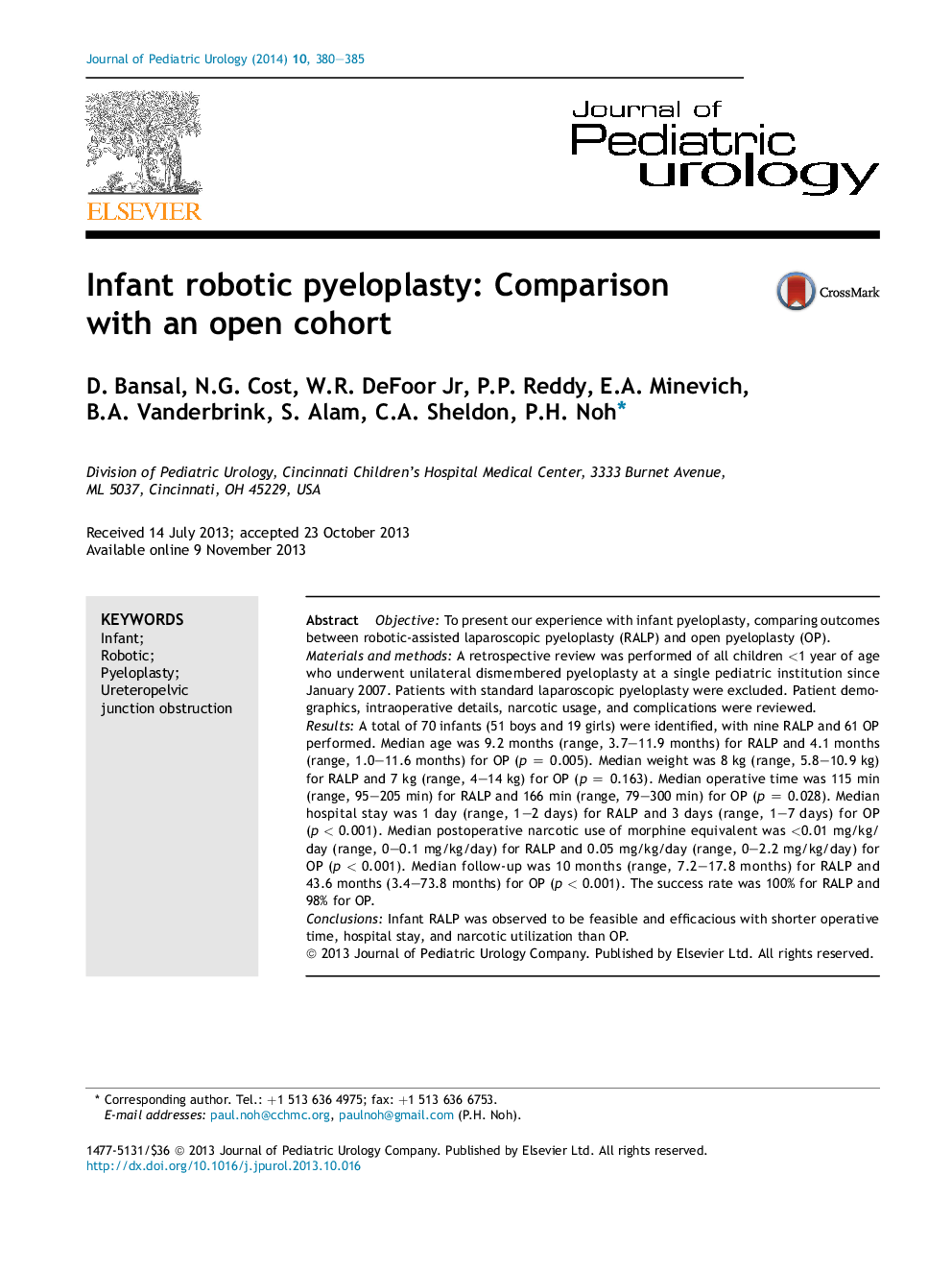| Article ID | Journal | Published Year | Pages | File Type |
|---|---|---|---|---|
| 4162775 | Journal of Pediatric Urology | 2014 | 6 Pages |
ObjectiveTo present our experience with infant pyeloplasty, comparing outcomes between robotic-assisted laparoscopic pyeloplasty (RALP) and open pyeloplasty (OP).Materials and methodsA retrospective review was performed of all children <1 year of age who underwent unilateral dismembered pyeloplasty at a single pediatric institution since January 2007. Patients with standard laparoscopic pyeloplasty were excluded. Patient demographics, intraoperative details, narcotic usage, and complications were reviewed.ResultsA total of 70 infants (51 boys and 19 girls) were identified, with nine RALP and 61 OP performed. Median age was 9.2 months (range, 3.7–11.9 months) for RALP and 4.1 months (range, 1.0–11.6 months) for OP (p = 0.005). Median weight was 8 kg (range, 5.8–10.9 kg) for RALP and 7 kg (range, 4–14 kg) for OP (p = 0.163). Median operative time was 115 min (range, 95–205 min) for RALP and 166 min (range, 79–300 min) for OP (p = 0.028). Median hospital stay was 1 day (range, 1–2 days) for RALP and 3 days (range, 1–7 days) for OP (p < 0.001). Median postoperative narcotic use of morphine equivalent was <0.01 mg/kg/day (range, 0–0.1 mg/kg/day) for RALP and 0.05 mg/kg/day (range, 0–2.2 mg/kg/day) for OP (p < 0.001). Median follow-up was 10 months (range, 7.2–17.8 months) for RALP and 43.6 months (3.4–73.8 months) for OP (p < 0.001). The success rate was 100% for RALP and 98% for OP.ConclusionsInfant RALP was observed to be feasible and efficacious with shorter operative time, hospital stay, and narcotic utilization than OP.
